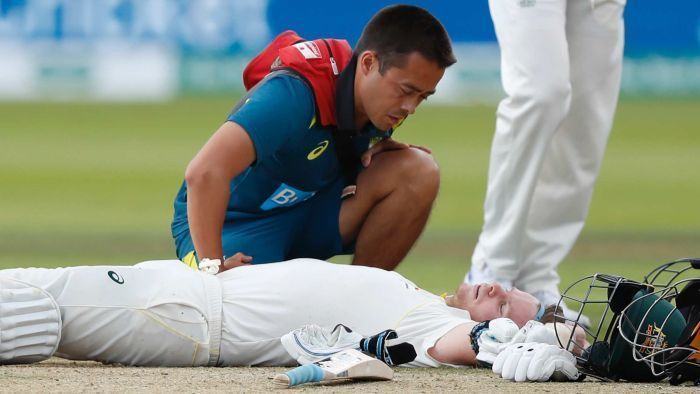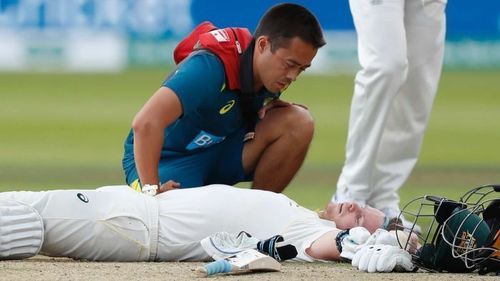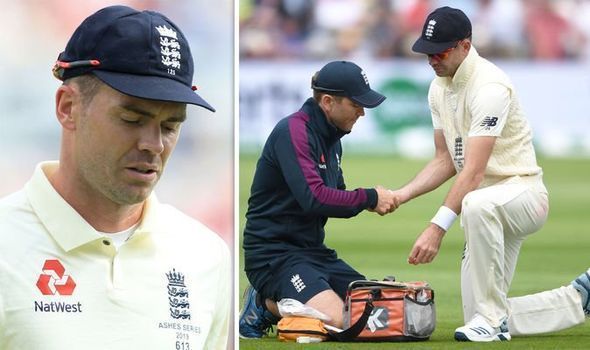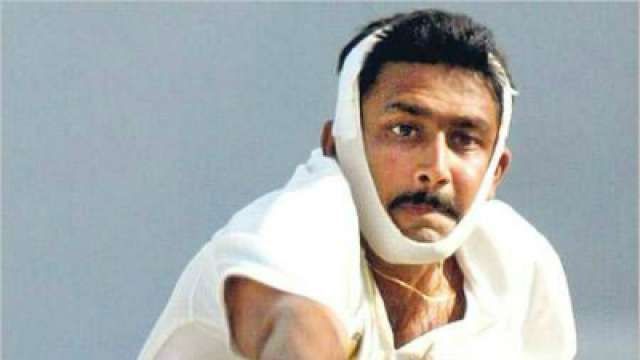
Why not allow substitutes for all types of injuries sustained on the field?

Australian batsman Marnus Labuschagne became the first-ever concussion substitute used in a Test match when he replaced the injured Steve Smith on the fifth and final day of the second Test match between Australia and England played at Lord's.
On the fourth day of the Test, Smith was struck by a bouncer from Jofra Archer and suffered a concussion. When it was confirmed by the medical team that Smith could take no further part in the match, the Australian team management opted for a like-for-like replacement in the form of Labuschagne.
To Labuschagne’s credit, he kept Archer's threat at bay, scoring 59 and consuming 100 balls in the process. He was the only Australian batsman to have played out 100 balls in the second innings to force a draw.
There is a strong connection between the concussion substitute rules and Cricket Australia. After the unfortunate incident of Phil Hughes, the two-year trial run of the concussion rule was first carried out in the domestic tournaments and the Big Bash League in Australia.
Following its successful implementation in Australia, the ICC adopted the same - not only in Test Cricket, but also in all other international formats of the game.
The injuries to Hashim Amla, Hashmatullah Shahidi and Alex Carey in the recently concluded 50-over World Cup hastened the introduction of this rule.
As it turned out, Australia became the first team to opt for a concussion substitute. Ironically, the substitute Labuschagne facing his first ball in Australia’s second innings was knocked over by a bouncer from Archer. Thankfully, he could continue his innings after passing the mandatory preliminary checks for concussion.
But for the inclement weather and the new concussion substitute rules which came into force from 1st August 2019, Australia could have lost the Lord’s Test. This brings us to our central topic of discussion: why not allow like-for-like substitutes for all types of injuries suffered on the field?
Take for instance the first Ashes Test at Edgbaston, where England fast bowler James Anderson pulled out after bowling a mere 4 overs. Within the first half-an-hour on the first day of the Test, the England team was reduced to 10 players.
For nearly the entire duration of that match, it was a peculiar case of 10 fit England players up against 11 Aussies.

In such a discriminating scenario, why not allow substitutes for other injuries as well? In any case, the decision is going to be at the discretion of the umpires and the match referee. They could ensure against players faking internal injuries.
In the past, the sport has seen players suffering injuries after the toss and being replaced before the start of the match with the consent of the opposition captain and the umpires. When that is the case, why not extend the same privilege to all types of injuries happening on the field?
A player who has suffered a fracture is as incapacitated from participating in the proceedings as a player who has suffered a head injury.
In any case, if permitted, such replacements are going to be like-for-like replacements, thus preventing teams from taking undue advantage of the rules. The only restriction should be that the injured player, once replaced, should take no further part in the match.
A somewhat similar rule regarding the use of runners was in vogue earlier, but was scrapped subsequently when batsmen started to fake internal injuries. But there was a big difference there, as the presence of a runner made the batsman’s job much easier. He could conserve his energy and switch over to the power game - as it happened with Saeed Anwar in his innings of 194 at Chennai in 1997.
Cricket is a funny game with some funny rules. For instance, a batsman is not considered out even if the ball hits the middle stump flush, as long as the bails don’t fall. However, over the years, some of the outdated rules have been suitably modified in tune with the changing trends in the game.
The concussion substitute rule is one such new rule born out of logic and common sense. The primary idea is not to further expose an injured batsman, and the incidental idea is that the team should not suffer on account of the untimely injury.
The new concussion rule doesn’t give the option to the injured player to take his call and thereby expose himself to further risk.

Gone are the days when Mohinder Amarnath continued to bat with a bloodied face after being badly struck by a bouncer from Malcolm Marshall, or Anil Kumble bowling 14 overs at a stretch with a broken jaw. Cricket has now become a professional game where player safety assumes paramount importance, more than anything else.
In that context, it would only be fair to the injured player and his team if proper rules are framed to replace such a player.
The first possible problem faced by the umpires and match referees in substitution will be the case of players faking injuries, which boils down to the integrity of individual players. Left to himself, every player would wish to play as many matches as possible for his country, rather than spending his time on the physio’s table. Hence, the drive to represent one's country in itself will act as a default solution to the problem of faking injuries.
The second problem could be teams getting tempted to misuse this provision as a means to correct their wrong selection and composition of the team. But the like-for-like replacement clause is the solution to that problem and should take care of such misuse.
The team would be allowed to suggest a player who would be a perfect replacement for the injured player. For instance, if a fast bowler is injured, he can't be replaced with a spinner. Similarly, if a specialist batsman is replaced by an all-rounder, the all-rounder is only entitled to bat and not bowl.
Another problem could be that the players might come into the game half-fit and carrying injuries. With the knowledge that they could be replaced if they break down in the middle of a game, a star player might try his luck if the replacement provision is in place.
But the in-built solution to such a problem is the fact that the team management normally discourages such adventures keeping in view the long-term career of the concerned player.
In the absence of such a replacement provision for all types of injuries, the players might be at risk of further aggravating their injuries in their anxiety to serve their country. It would not be out of place to mention here that Smith did come back to resume his innings in the first innings of the Lord's Test. Any such genuine intention on the part of the individual player could sometimes lead to a career-ending injury.
To sum up, there are some pros and cons in allowing like-for-like substitutes for all types of injuries suffered in the middle. However, since the advantages outweigh the disadvantages, the ICC could look to implement this rule on an experimental basis in one series to determine the outcome.
As long as the injury is genuine and the further participation of the injured player in the match is ruled out, it would be justified in allowing a like-for-like substitute for all types of injuries. This will, after all, be an enabling provision with plenty of covenants, which would be resorted to only when a need arises.
Also read – Ashes Most five wicket hauls
Follow Sportskeeda for all the updates on Ashes live score, news, results, Ashes Schedule, most runs, most wickets and fantasy tips.